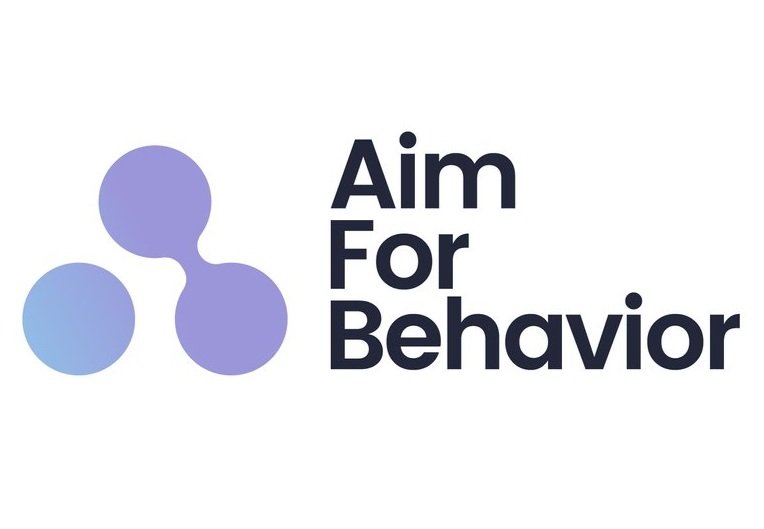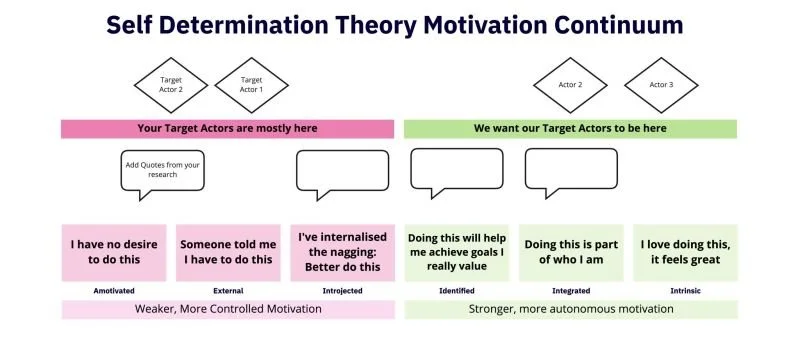Motivation quality matters for your customers and employees!
In our projects at Aim For Behavior, we like to work with Self Determination Theory to understand and design for psychological needs:
-Autonomy: I make my own choices, I am in control
-Competence: I am learning, progressing, improving, and getting better
-Relatedness: Community and social aspects; being part of something bigger
We may for example - look at both needs satisfaction and frustrations, as well as motivation quality.
This gives us a signal along with other data sources of where we may need to focus behavior change strategies.
As an example, we may find that there is a lack of autonomy because there is no chance for people to set their own goals. (This could be at work, or in a digital product, the designer chose for them)
So if we want to design for this we will choose a behavioral strategy that can help increase autonomy and decrease frustration.
You don't of course design for everyone, as you also need to know other things that may be influencing behavior, to make sure you have the right target actors.
This means that should probably start with a smaller group that is <intrinsically> motivated to change and for whom we can remove barriers to autonomy.
Think here about those who are open to trying new things, and have an open mindset.
Ideally, after you have built and tested your solution and this group sees the change, then we would have this group bring over the next group, the <identified> ones - who are doing it because it will help them achieve their goals.
Once you get those 2 groups, and once there are more and more employees or customers doing it, then you could target those who are <Introjected> who will perhaps end up doing the new behavior because it becomes the norm.
So remember, knowing motivation quality will save you time and resources.
💡 Tips:
Amy Bucher has a great book called Engaged where she talks more about this in the context of behavior design, worth a pick up.
You could also pick up a book called Glued to Games by Scott Rygby and Richard Ryan
Robert

